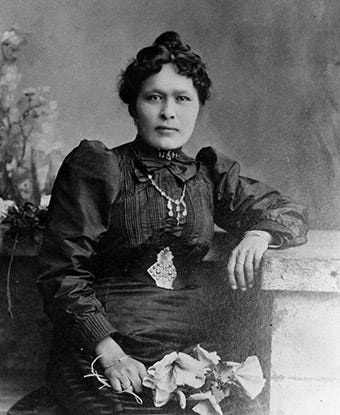The Klondike Gold Rush was a watershed moment in Canadian history. For a brief period from 1897 to 1898, 100,000 prospectors made their way to the Yukon.
Of those, only 30,000 made it to the gold fields of the Klondike and just a few hundred got rich.
How did this gold rush begin?
It started on Aug. 16, 1896 when a group of people took a break in their travels along Rabbit Creek (later renamed Bonanza Creek). It was there that someone spotted something shining in the water of the creek.
According to many accounts, that person was Shaaw Tláa.
Shaaw Tláa was born around 1857 near Bennett Lake in the Yukon. Her father, Kaachgaawáa, was the head of the Tlingit crow clan. Her mother, Gus’dutéen, was a member of the Tagish wolf clan.
Her name, Shaaw Tláa, means gumboot mother.
She eventually married her cousin Kult’ús. Sadly, both her husband and daughter died in the early-1880s from influenza.
Now a widow, she entered into a common-law marriage with George Carmack, an American prospector and miner. With him, she took the name Kate Carmack.
George, Shaaw Tláa and her brother Keish, also known as Skookum Jim, spent the next few years trapping, trading and prospecting. Shaaw Tláa and George had a daughter in 1893 named Graphie Grace Carmack.
After the gold find, Shaaw Tláa, Keish and George became incredibly wealthy. Shaaw Tláa and Kate moved from the Yukon and built a home in Hollister, California.
Soon after, George Carmack left Shaaw Tláa and married Marguerite Laimee in 1900. Since Shaaw Tláa could not prove she was George’s lawful wife, she was deemed ineligible for alimony.
With George taking all the money, she returned to the Yukon where Keish built her a cabin.
Sadly, Shaaw Tláa died during the Spanish Flu epidemic on March 29, 1920.
In 2018, she was inducted into Canada’s Mining Hall of Fame. She was honoured two decades after her brother and common-law husband were inducted.




